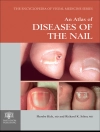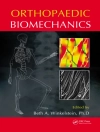Most obstetricians and pediatricians would agree that the examination of the placenta often helps to explain an abnormal neona tal outcome. As early as in 1892, Ballantyne wrote, A diseased foetus without its placenta is an imperfect specimen, and a description of a foetal malady, unless accompanied by a notice of the placental condition, is incomplete. Deductions drawn from such a case cannot be considered as conc- sive, for in the missing placenta or cord may have existed the ca...
Spis treści
Examination of the Placenta.- Macroscopic Features of the Delivered Placenta.- Microscopic Survey.- Placental Types.- Early Development of the Human Placenta.- Basic Str...
Kup ten ebook, a 1 kolejny otrzymasz GRATIS!
Język Angielski ● Format PDF ● Strony 1050 ● ISBN 9780387267425 ● Rozmiar pliku 58.7 MB ● Wydawca Springer New York ● Miasto NY ● Kraj US ● Opublikowany 2006 ● Ydanie 5 ● Do pobrania 24 miesięcy ● Waluta EUR ● ID 2144284 ● Ochrona przed kopiowaniem Społeczny DRM












